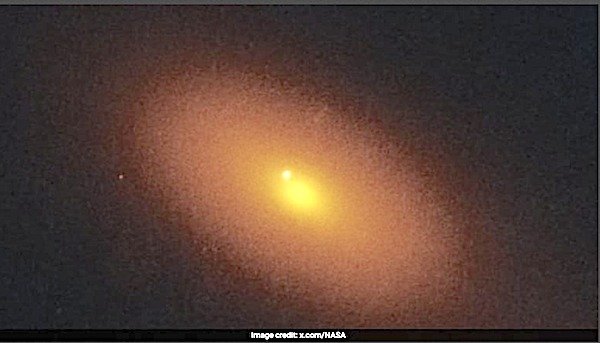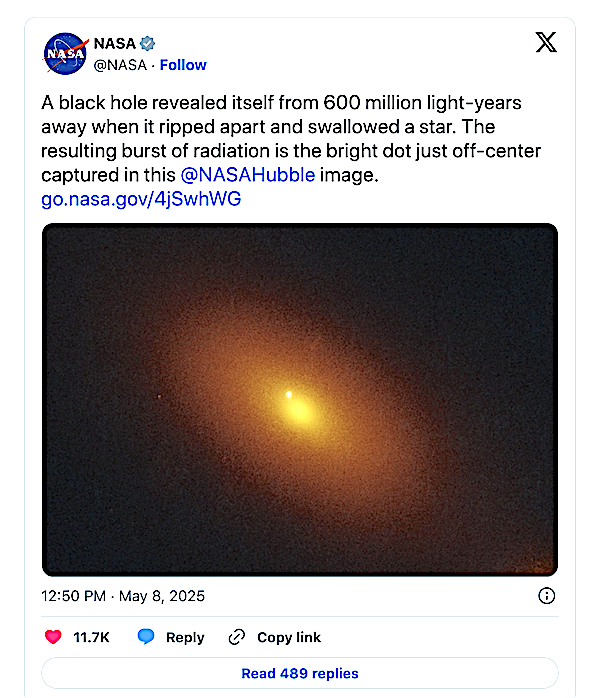
NASA has released a stunning image of a black hole swallowing a star and causing a massive explosion. Although the cosmic event took place 600 million light-years ago, the burst of radiation has only reached us now, which appears like a bright dot.
NASA has captured the astronomical event, called a Tidal Disruption Event (TDE), using its Hubble Space Telescope.
The space agency’s Hubble Space Telescope captured the astronomical event, called a Tidal Disruption Event (TDE), and also confirmed it with observations from the Chandra X-ray Observatory and the Very Large Array radio telescope.
Posting the image to X, NASA wrote, “A black hole revealed itself from 600 million light-years away when it ripped apart and swallowed a star. The resulting burst of radiation is the bright dot just off-centre captured in this @NASAHubble image.”

Lead study author Yuhan Yao of the University of California at Berkeley said, “AT2024tvd is the first offset TDE captured by optical sky surveys, and it opens up the entire possibility of uncovering this elusive population of wandering black holes with future sky surveys.”
She further mentioned, “Right now, theorists haven’t given much attention to offsetting TDEs. I think this discovery will motivate scientists to look for more examples of this type of event.”
How does a tidal disruption event (TDE) happen?
A TDE happens when an infalling star gets too close to a black hole, which then stretches it like spaghetti due to its super-strong gravity. As the star falls apart, its pieces begin to orbit the black hole. This shredded material becomes extremely hot as it orbits, producing strong energy and light bursts that telescopes may detect as visible and ultraviolet light.
Ryan Chornock, associate adjunct professor at UC Berkeley and a member of the ZTF team, said, “Tidal disruption events hold great promise for illuminating the presence of massive black holes that we would otherwise not be able to detect.”
Edited by: NDTV News Desk
